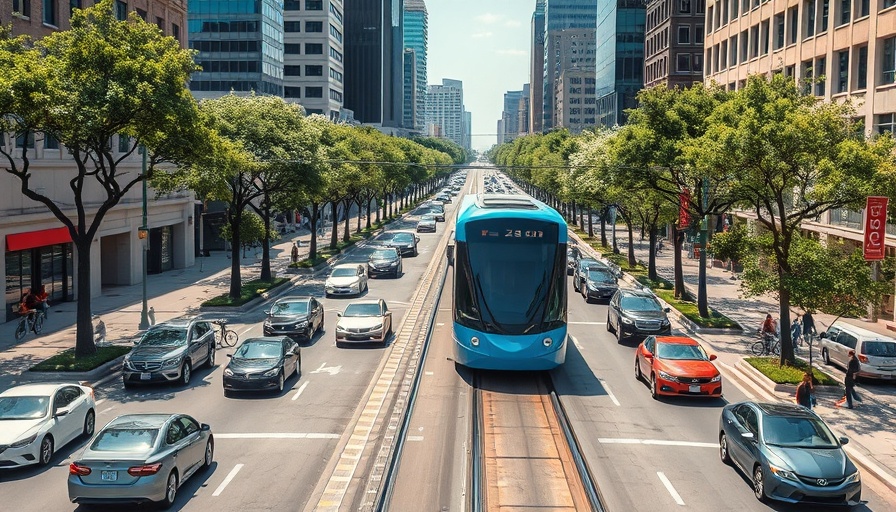
Austin’s Ambitious Light Rail Project: Overcoming Challenges for a Sustainable Future
Austin, Texas, is making strides towards a more connected and environmentally friendly urban future with its Project Connect initiative. This significant $7 billion light rail project has garnered attention and public support, particularly after the unveiling of the draft environmental impact statement in January. The proposed 9.8-mile light rail line, which includes 15 stations, aims to extend over Lady Bird Lake and enhance accessibility throughout the city. However, it faces hurdles, including federal funding uncertainties and state opposition.
Why Public Transit Matters
Investing in public transit is crucial for any growing city, especially one like Austin, where rapid population growth and urban sprawl are evident. Public transit systems, such as light rail, not only reduce traffic congestion but also lower carbon emissions significantly. Communities that prioritize public transit often see enhanced economic opportunities, improved air quality, and greater accessibility for residents.
Engaging the Community: A Local Feedback Loop
Community involvement has played a pivotal role in shaping Project Connect. According to Lindsay Wood, executive vice president of engineering and construction at Austin Transit Partnership (ATP), many modifications to the project stemmed from public feedback, including the addition of a station at Wooldridge Square, near the Texas Capitol. This community-centric approach ensures that the project meets the needs and desires of Austin's residents, reinforcing the importance of listening to constituents in urban planning.
Facing Up to Funding Challenges
The future of Project Connect is intricately tied to its funding. Initially, ATP aimed to leverage federal funding for half of the costs, but recent developments, including a temporary funding freeze and state litigation, have raised concerns. However, ATP officials remain confident that local taxpayer contributions, amounting to $193 million, will allow progress to continue through 2025. It highlights the resilience and dedication of the community to see the project through these turbulent times.
Exploring Innovative Transportation Solutions
As cities like Austin explore sustainable transport options, the potential exists for combining light rail with other modes of transportation, such as bike-sharing programs and enhanced pedestrian pathways. Such integrations can significantly improve accessibility and promote healthier lifestyles among residents, as research shows physical activity in urban environments correlates with better mental well-being.
Future Outlook for Austin’s Public Transit
If all goes according to plan, the light rail service is expected to launch by 2033, serving as a cornerstone for Austin’s broader transportation network. Priority link extensions could eventually connect to major hubs, including Austin Bergstrom International Airport, expanding the reach of public transit in the area. Austin's commitment to sustainable transport represents hope for future urban development across the nation.
For homeowners and families looking to adapt to the changes that increased light rail accessibility will bring, considering home improvement services or contractors in the area can help accommodate new transportation dynamics, potentially increasing property values and improving quality of life.
Your Role in the Future of Austin’s Transit System
As Austin residents, staying informed and engaged with the development of public transit is crucial. Participating in public comment forums and providing feedback on how the light rail should function can directly impact the outcome. A well-informed community can drive the project in a direction that aligns with public needs—making it essential for citizens to voice their perspectives.
In summary, the light rail project is not just about transportation; it’s about creating a viable, sustainable, and connected community. For homeowners and families in Austin, embracing these changes can lead to enhanced living standards and healthier lifestyles.
 Add Row
Add Row  Add
Add 




Write A Comment